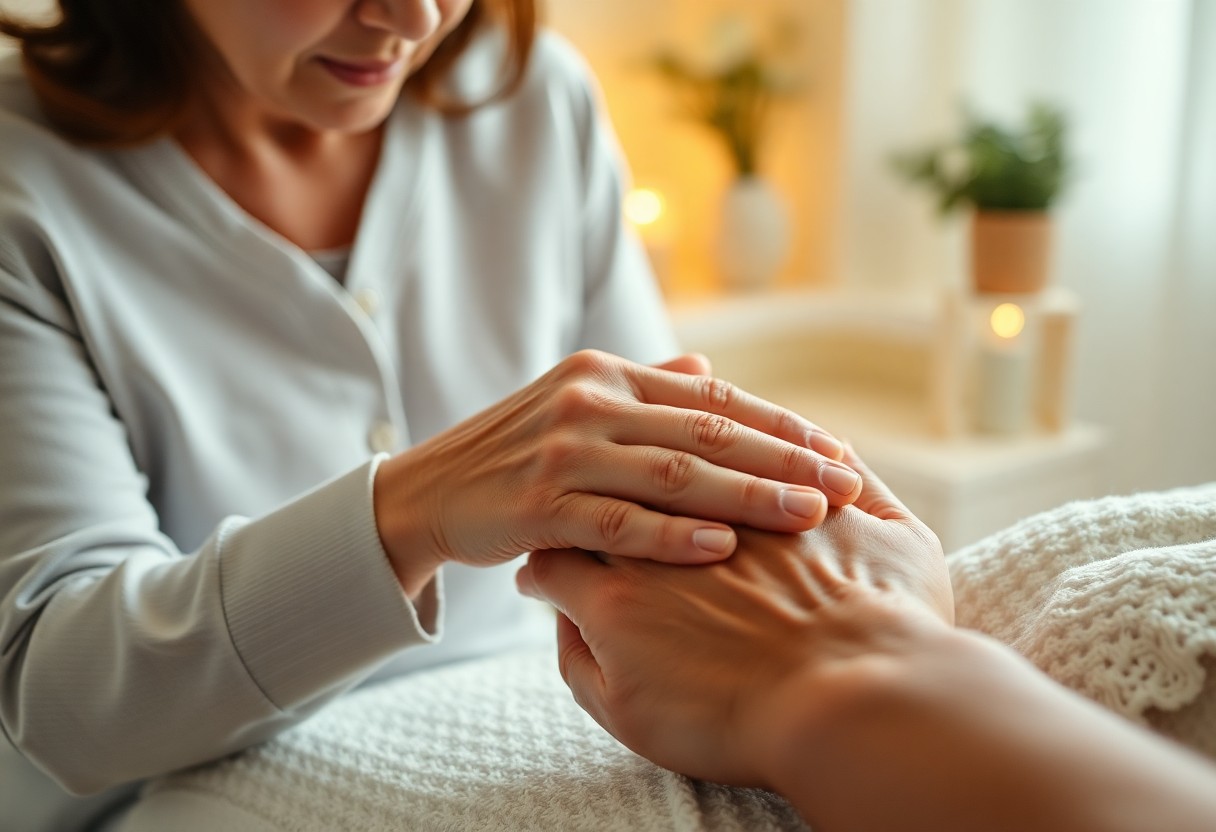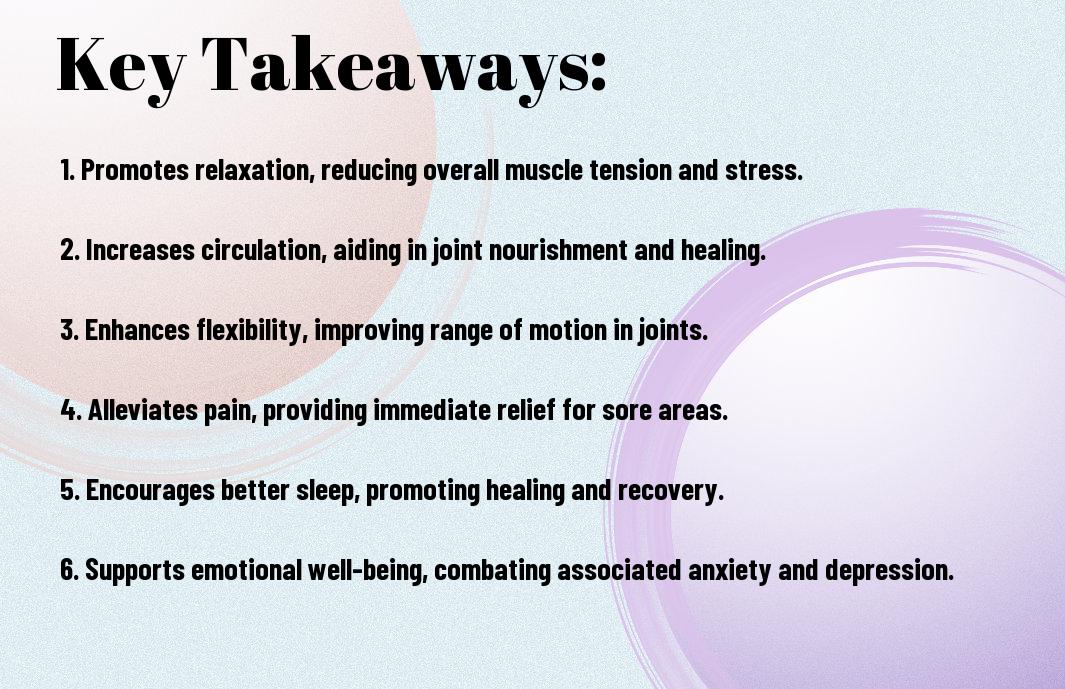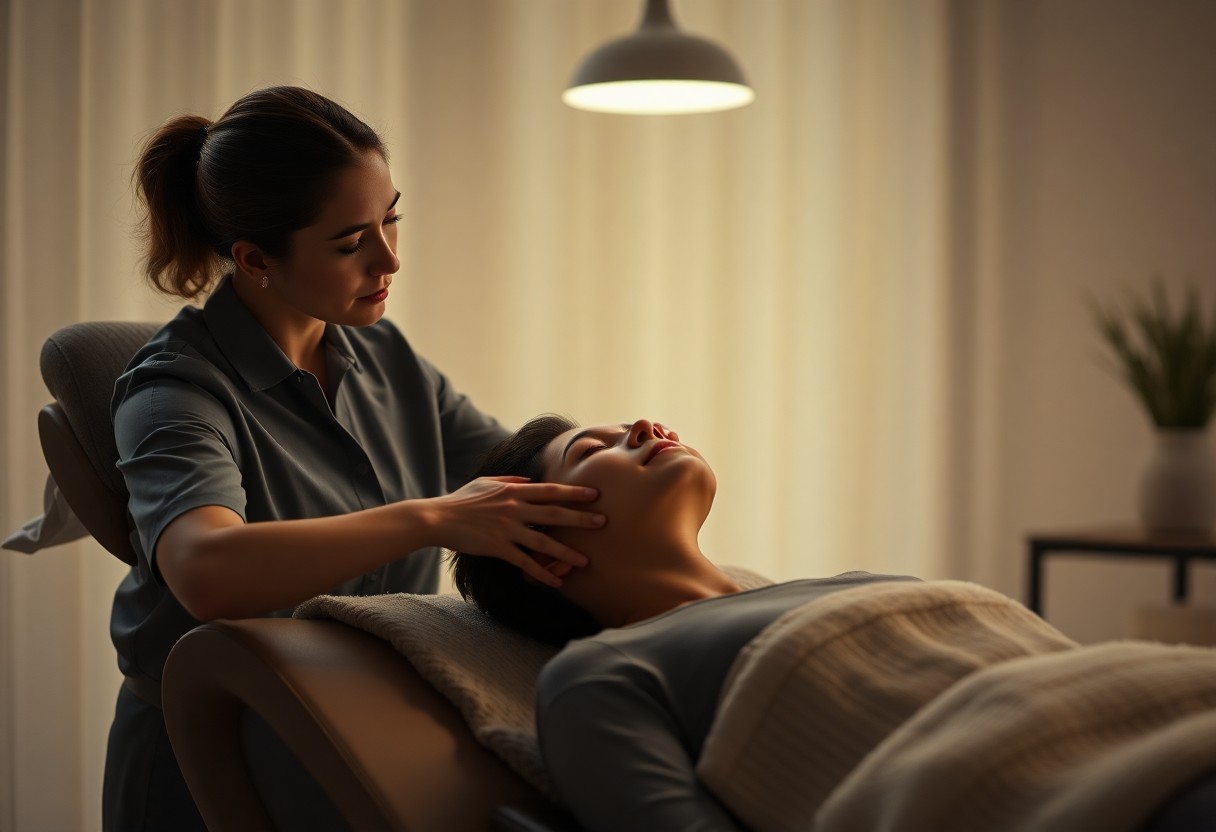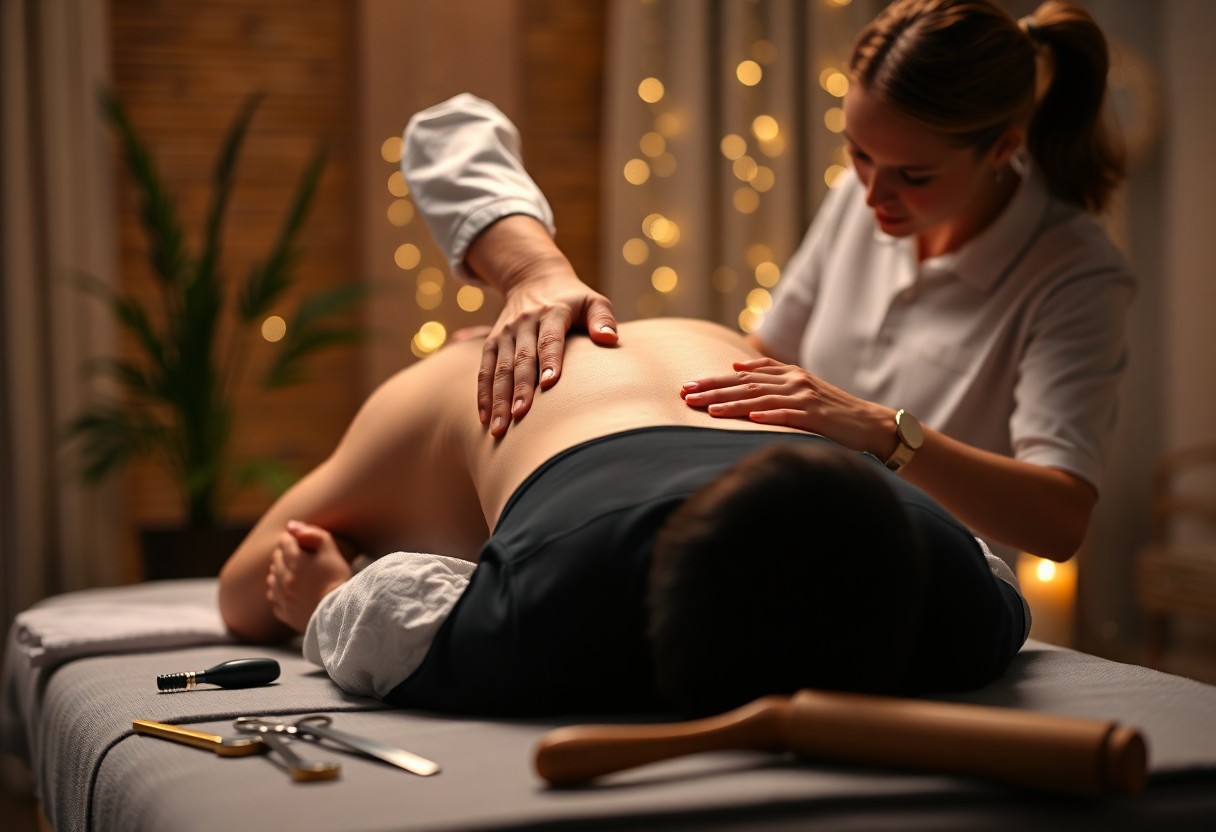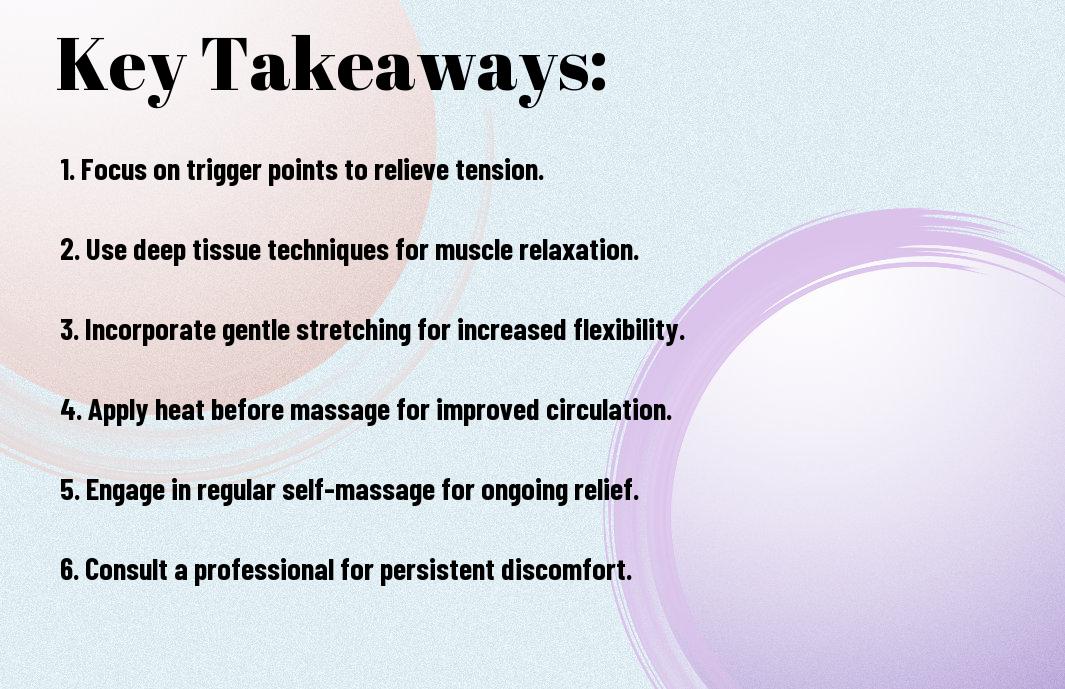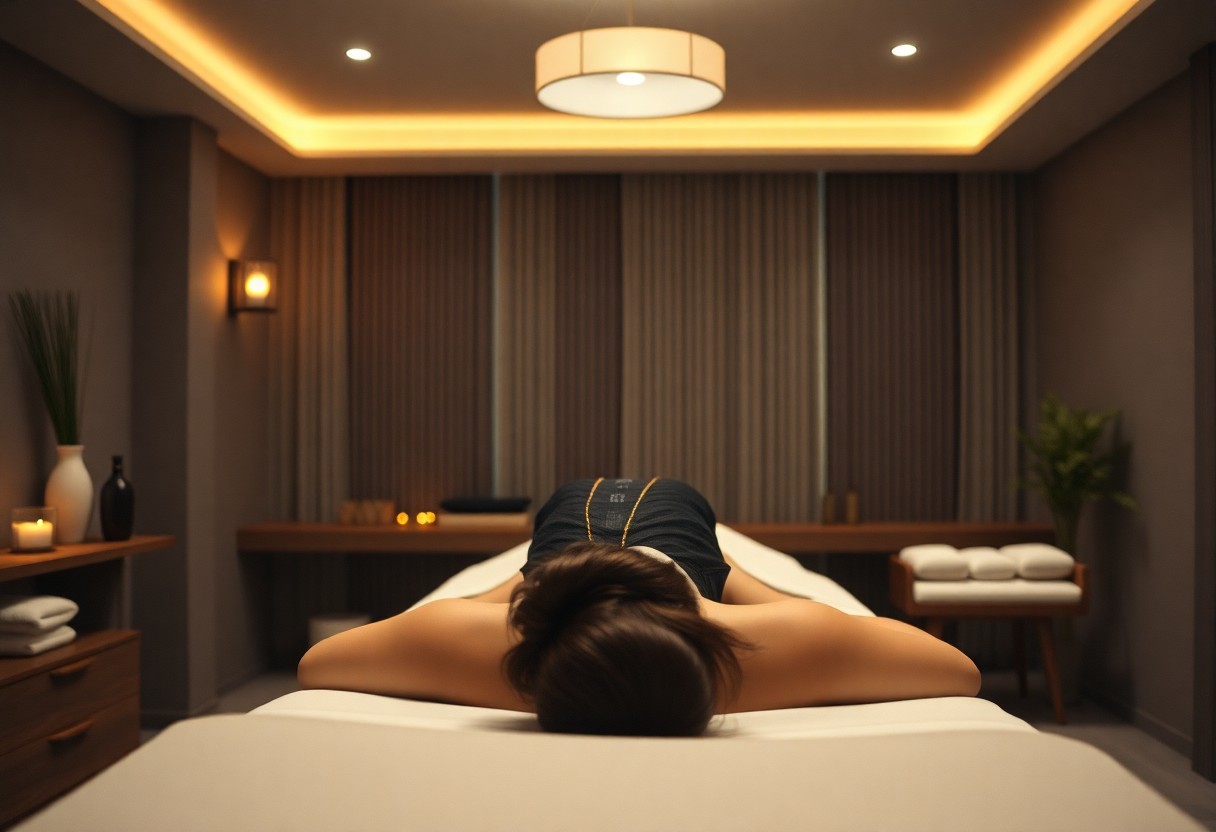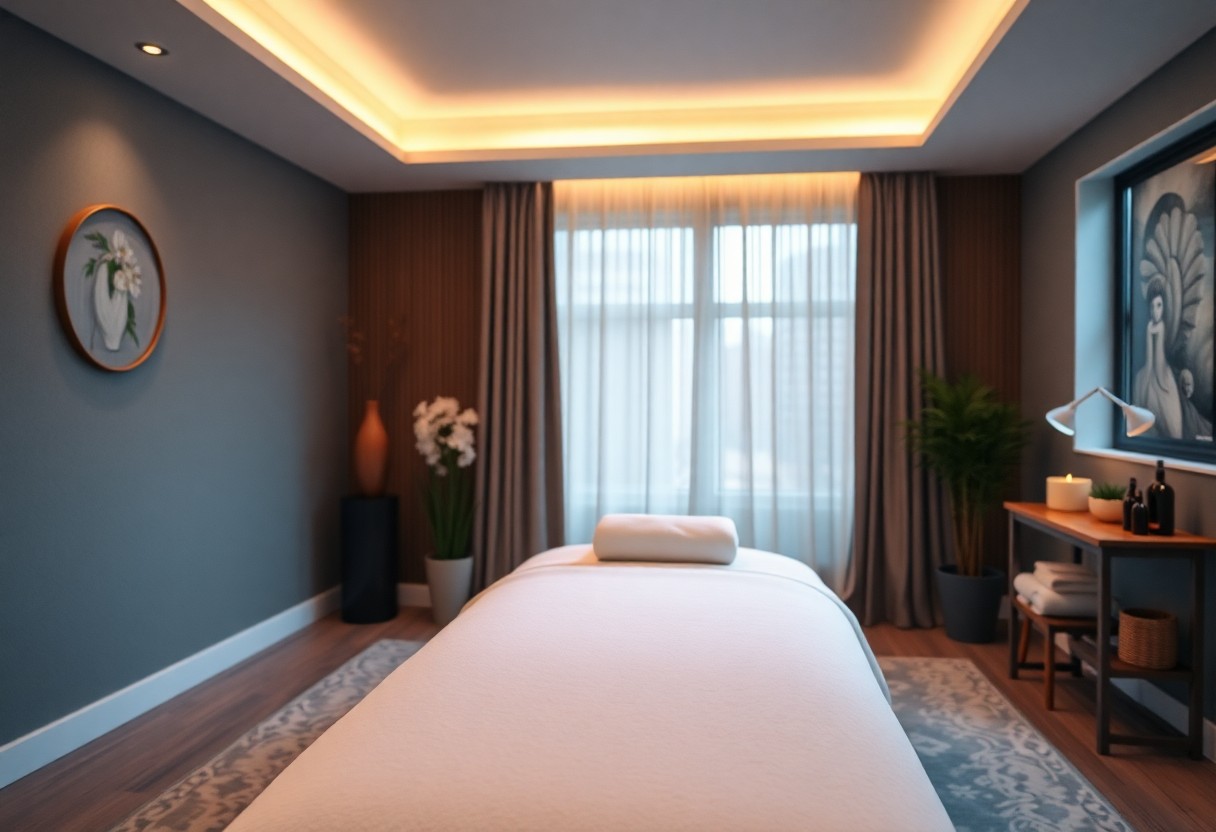Pain associated with arthritis can significantly impact your quality of life, making daily tasks feel daunting. Fortunately, massage therapy can serve as an effective tool in managing this discomfort. By targeting specific muscle groups and improving circulation, massage not only alleviates pain but also enhances flexibility and joint mobility. In this post, you’ll discover how incorporating massage into your treatment regimen can create a substantial difference in how you experience and cope with arthritis pain.
Key Takeaways:
- Improved Circulation: Massage therapy enhances blood flow, which can help reduce stiffness and promote healing in affected joints.
- Pain Relief: Regular massage sessions can significantly alleviate pain associated with arthritis by relaxing tight muscles and improving joint function.
- Reduced Inflammation: Certain massage techniques may help lower inflammation in arthritic joints, contributing to less swelling and discomfort.
- Enhanced Flexibility: Massage can improve flexibility and range of motion, making it easier for individuals to perform daily activities without restrictions.
- Stress Reduction: The relaxing effects of massage not only address physical pain but also help decrease stress and anxiety, which can exacerbate arthritis symptoms.
Understanding Arthritis
The term arthritis refers to a group of more than 100 different conditions that cause inflammation in the joints, leading to pain, stiffness, and swelling. This condition can affect people of all ages, and its impact often varies based on the type and severity of the arthritis. Understanding the specifics of your arthritis can empower you to seek the appropriate treatment and lifestyle adjustments to manage your symptoms effectively.
Types of Arthritis
The various types of arthritis include:
- Osteoarthritis
- Rheumatoid arthritis
- Psoriatic arthritis
- Gout
- Juvenile arthritis
Assume that knowing these types can help you identify the nature of your condition and the best treatment options available.
| Type of Arthritis | Description |
|---|---|
| Osteoarthritis | Degenerative joint disease due to wear and tear |
| Rheumatoid Arthritis | An autoimmune disorder causing joint inflammation |
| Psoriatic Arthritis | Associated with the skin condition psoriasis |
| Gout | Caused by excess uric acid in the body |
| Juvenile Arthritis | Arthritis affecting children |
Symptoms and Causes
For many individuals, arthritis manifests through a range of symptoms, including joint pain, swelling, and stiffness, particularly during specific times like morning or after prolonged inactivity. The causes of arthritis can vary widely, with some forms resulting from genetic predisposition while others stem from environmental factors or lifestyle choices.
Consequently, knowing the symptoms and causes can help you in seeking timely treatment and lifestyle modifications. For example, if you experience persistent joint pain or stiffness, it might warrant a conversation with your healthcare provider. Increased awareness of the triggers—such as age, family history, and injury—empowers you to take proactive steps in managing your health. By understanding how these aspects relate to your condition, you can work towards effective pain management and improved quality of life.
The Science Behind Massage Therapy
If you experience arthritis pain, understanding the science behind massage therapy can empower you to manage your symptoms effectively. Research demonstrates that massage can reduce inflammation and improve circulation, thereby creating a conducive environment for your body to heal. By promoting relaxation and releasing endorphins, massage not only alleviates pain but also enhances your overall well-being. This holistic approach may complement other therapeutic methods you are using to cope with arthritis.
How Massage Affects Muscles and Joints
An integral aspect of massage therapy is its ability to affect the muscles and joints directly. When muscles are manipulated, circulation increases and tension is alleviated, which can lead to improved flexibility and range of motion. For individuals with arthritis, this can mean a significant reduction in discomfort as well as enhanced mobility, allowing you to engage more fully in daily activities.
Evidence of Massage Therapy’s Efficacy
By examining the body of research surrounding massage therapy, you can find compelling evidence supporting its efficacy in managing arthritis pain. Numerous studies have shown that patients who receive regular massage report lower pain levels and improved quality of life.
Evidence from various clinical trials suggests that massage therapy can effectively reduce pain and discomfort associated with arthritis. Participants in these studies often experience significant relief in joint pain and muscle tension, leading to enhanced mobility and improved physical function. Additionally, some findings indicate that regular sessions can also contribute to lower levels of anxiety and depression, which often accompany chronic pain conditions. Implementing massage therapy into your arthritis management plan could ultimately lead to a more comfortable and active lifestyle.
Techniques of Massage for Arthritis Relief
Unlike other pain relief methods, massage therapy offers a variety of techniques tailored to effectively alleviate arthritis discomfort. By targeting specific areas of tension and inflammation, these techniques can enhance circulation and promote relaxation, helping you manage your symptoms more effectively.
Swedish Massage
Around the world, Swedish massage is recognized for its gentle approach and rhythmic strokes. This technique focuses on relaxing the entire body, which can be particularly beneficial for those suffering from arthritis pain, as it reduces stress and increases blood flow to affected areas.
Deep Tissue Massage
Along with Swedish massage, deep tissue massage provides a more intensive approach aimed at deeper layers of muscle and connective tissue. This method works to release chronic muscle tension, making it an effective choice for those with arthritis, as it targets the root of pain effectively.
Another benefit of deep tissue massage is its ability to break down scar tissue and adhesions, which can contribute to joint stiffness and discomfort. By applying firm pressure, this technique improves your range of motion and enhances overall mobility, helping you engage in daily activities with greater ease.
Hydrotherapy
Against conventional treatment methods, hydrotherapy employs the use of water to soothe and relieve arthritis symptoms. By immersing your body in warm water, this technique alleviates pressure on your joints and reduces inflammation, which makes movement easier and less painful.
In addition to temperature benefits, hydrotherapy encourages relaxation of tense muscles and stimulates circulation. Engaging in warm water exercises or soaks can further enhance your flexibility and mobility, promoting a more active lifestyle while managing your arthritis pain effectively.
Benefits of Massage for Arthritis Sufferers
All arthritis sufferers can greatly benefit from massage therapy. Regular sessions can alleviate discomfort and provide a holistic approach to managing the condition. With its therapeutic touch, massage can help reduce swelling, enhance relaxation, and foster a greater sense of well-being, making it an effective complementary treatment for those coping with arthritis pain.
Pain Relief
Pain is a common and challenging experience for those living with arthritis. Massage can significantly alleviate this discomfort by increasing blood circulation, reducing muscle tension, and promoting the release of endorphins—natural pain relievers produced by your body. With targeted techniques, your therapist can help ease your pain, allowing you to enjoy a more comfortable day-to-day life.
Increased Mobility
For arthritis sufferers, maintaining mobility is imperative for daily activities and quality of life. Regular massage therapy can improve joint flexibility and reduce stiffness, enabling you to move more freely. The gentle manipulation of muscles and joints encourages better circulation, which can lead to improved range of motion and less discomfort during movement.
Due to the decrease in muscle tension and inflammation that massage provides, you may find it easier to perform everyday tasks and engage in physical activities that you once enjoyed. As your mobility improves, you may also experience a boost in your self-confidence and overall well-being, making massage a valuable addition to your arthritis management strategy.
Stress Reduction
Across all aspects of life, managing stress is important, especially when dealing with a chronic condition like arthritis. Massage can play a significant role in reducing stress levels by promoting relaxation and releasing built-up tension in your body. This relief not only calms your mind but also contributes to a healthier physical state, enhancing your overall quality of life.
Benefits of stress reduction extend beyond relaxation. By regularly incorporating massage into your routine, you may notice a reduction in anxiety and depression, both of which can exacerbate arthritis symptoms. A more relaxed mindset can lead to improved coping strategies, making it easier for you to manage the mental and emotional aspects of living with arthritis.
Finding the Right Massage Therapist
Not every massage therapist has the same expertise, so it’s important to find a professional who understands arthritis pain and its unique challenges. Prioritize locating someone who has experience working with clients suffering from similar conditions, as they will be better equipped to tailor the massage techniques to your specific needs.
Qualifications and Experience
Finding a massage therapist with the right qualifications is fundamental. Look for licensed practitioners who have taken specialized courses in arthritis or chronic pain management. Experience working with arthritis patients ensures they possess the necessary skills and techniques to alleviate your discomfort effectively.
Communicating Your Needs
Above all, effective communication is vital when it comes to addressing your pain. Be open about your symptoms, and discuss any specific areas where you feel discomfort. This honest dialogue will allow the therapist to tailor the session to your needs.
Due to the nature of arthritis pain, it is imperative that you clearly articulate how you’re feeling before and during your massage sessions. This includes explaining the severity of your pain, areas of tenderness, and any movements that exacerbate your symptoms. The better your therapist understands your individual situation, the more likely they can adjust their techniques to provide the best relief possible.
Incorporating Massage into Your Arthritis Management Plan
Keep in mind that integrating massage therapy into your arthritis management plan can enhance your overall treatment strategy. Collaborating with your healthcare provider will help you tailor the frequency and type of massage best suited to your condition. Make sure you communicate your specific needs and preferences to ensure optimal relief and comfort.
Frequency and Duration
On average, it’s advisable to schedule a massage session at least once a week to experience consistent benefits. Each session can last anywhere from 30 to 90 minutes, depending on your preferences and the intensity of pain. Adjusting the frequency and duration according to your pain levels may also help you gauge the best routine for your needs.
Complementary Therapies
Below are some complementary therapies that can enhance the benefits of massage for arthritis pain management. Incorporating techniques like acupuncture, physical therapy, or heat therapy alongside regular massages can provide a more holistic approach to managing your symptoms and improving mobility.
Your journey in managing arthritis pain can significantly benefit from a combination of therapies. Exploring options like acupuncture can help relieve pain points, while physical therapy can strengthen muscles around the joints. Additionally, heat therapy, such as warm baths or hot packs, can soothe stiffness. Using these complementary methods alongside regular massage sessions allows you to create a well-rounded approach that addresses both pain relief and improved functionality.
To wrap up
Following this, it’s necessary to recognize that massage can significantly alleviate your arthritis pain. By enhancing circulation, reducing tension, and improving mobility, you can experience greater comfort and improved quality of life. Consider exploring Massage for Arthritis to find tailored techniques that suit your needs. Your journey toward pain relief and enhanced well-being may begin with a simple touch, offering you both physical and emotional benefits as you navigate the challenges of arthritis.
FAQ
Q: How does massage therapy alleviate arthritis pain?
A: Massage therapy can help alleviate arthritis pain by improving circulation, which increases blood flow to the affected areas. This enhanced circulation can reduce stiffness and inflammation, leading to less discomfort. Massage also promotes relaxation, helping to lower stress levels that can exacerbate pain. Additionally, through gentle manipulation of muscles and joints, massage can increase flexibility and range of motion, making daily activities more manageable for individuals with arthritis.
Q: Are there specific types of massage recommended for arthritis sufferers?
A: Yes, certain types of massage are often recommended for those suffering from arthritis. Swedish massage, known for its gentle and relaxing techniques, can help soothe muscles and reduce tension. Additionally, myofascial release or trigger point therapy can target specific areas of pain and discomfort, providing focused relief. It’s important to consult with a qualified massage therapist who has experience in treating clients with arthritis to ensure the techniques used are safe and effective for your specific condition.
Q: How often should someone with arthritis consider getting a massage?
A: The frequency of massage therapy for someone with arthritis can vary based on individual needs and pain levels. Some may benefit from receiving massage weekly, particularly during flare-ups, to manage pain and stiffness. Others might find that bi-weekly or monthly sessions are sufficient for maintaining comfort and mobility. It’s advisable to work with a healthcare provider and a licensed massage therapist to develop a personalized plan that accommodates your specific symptoms and lifestyle.
